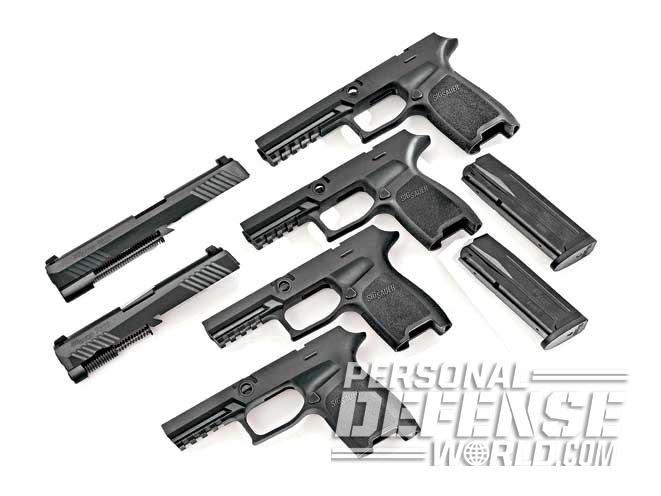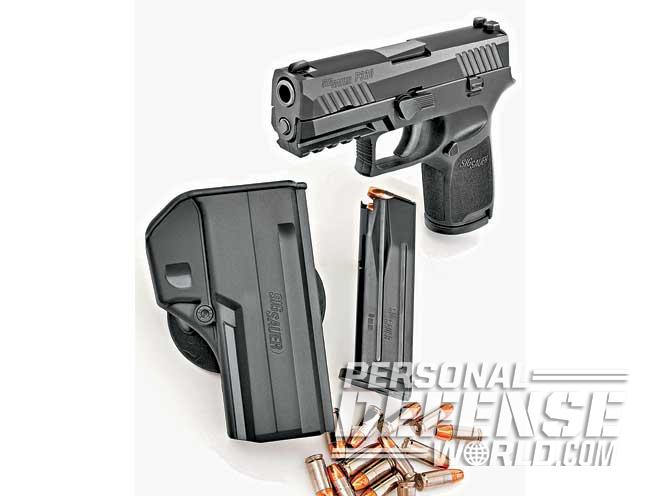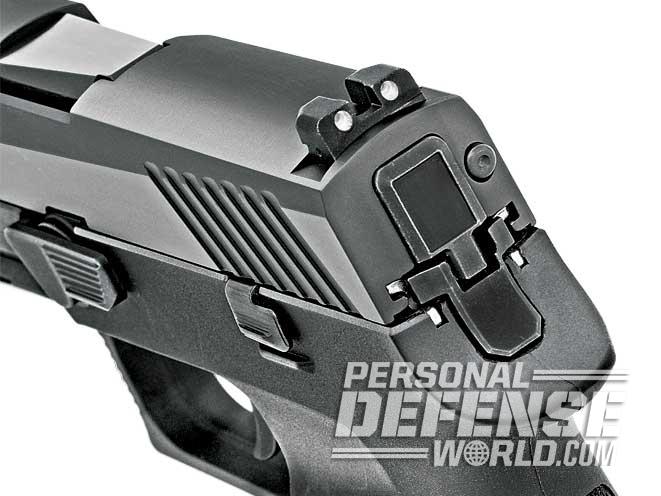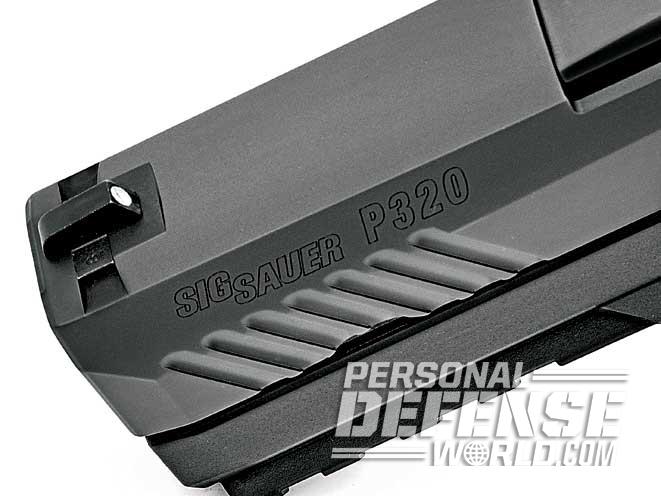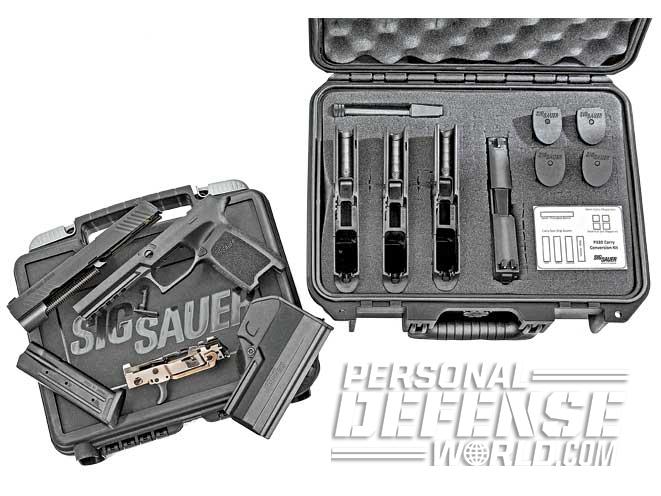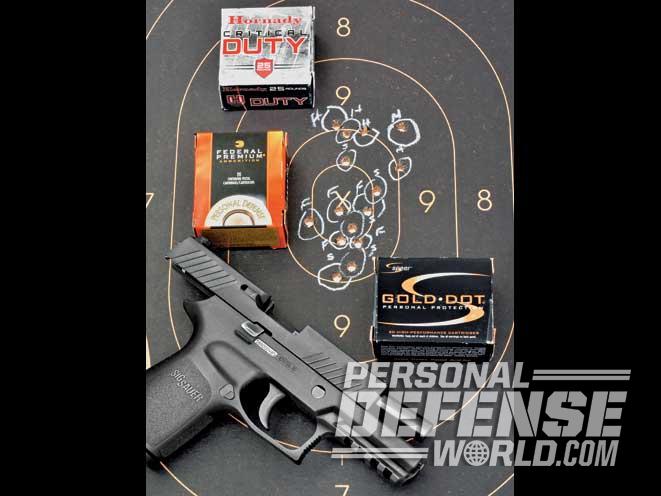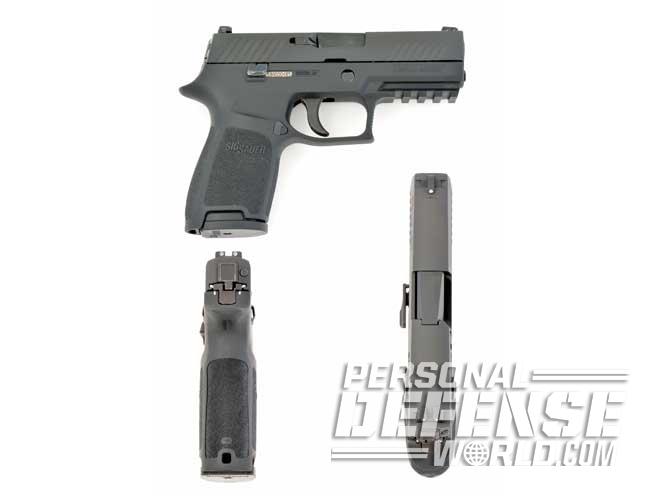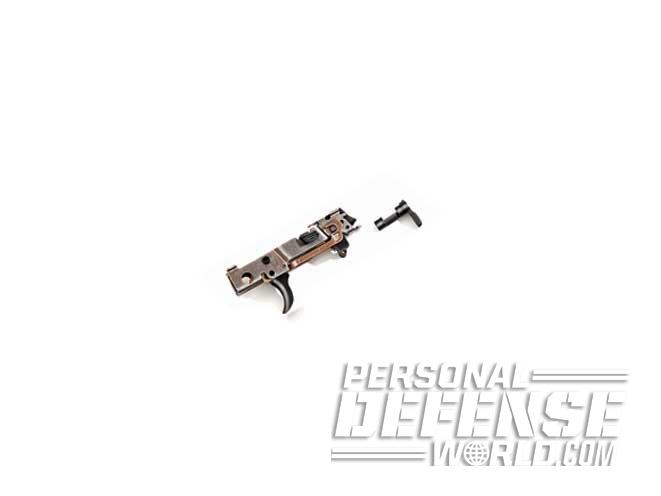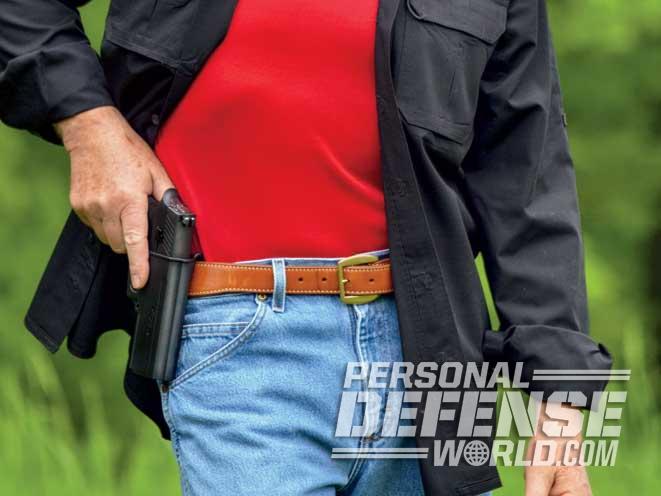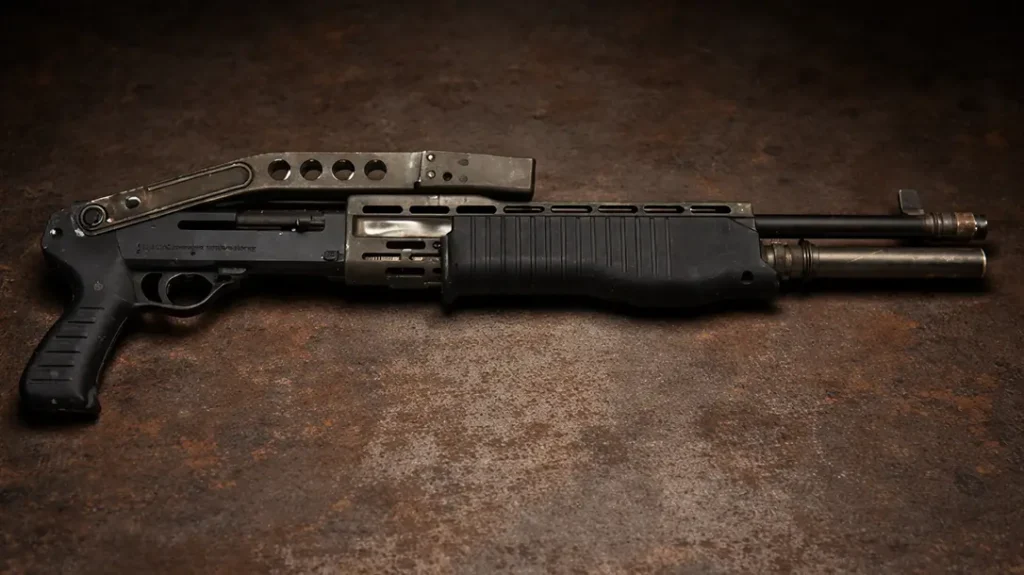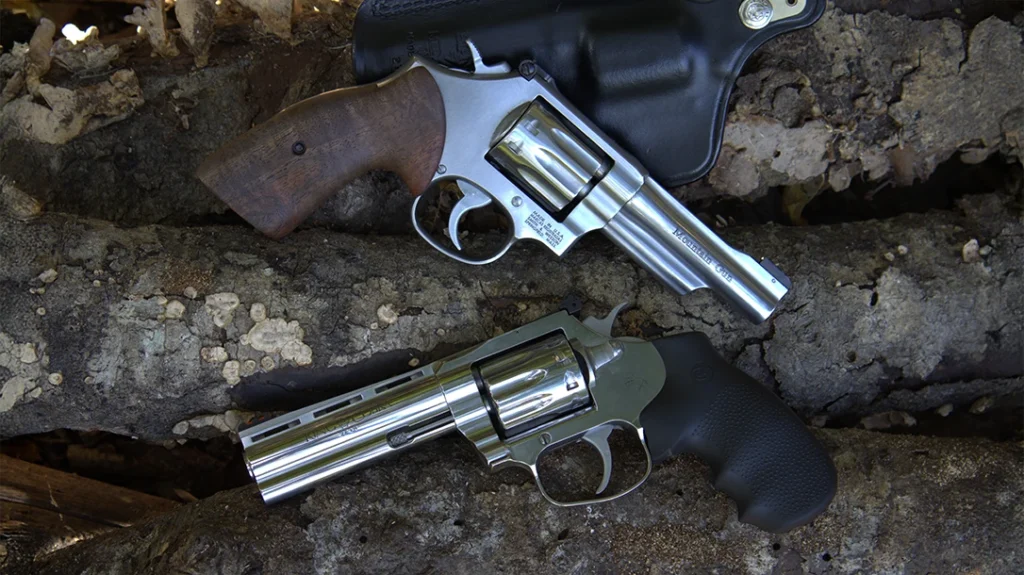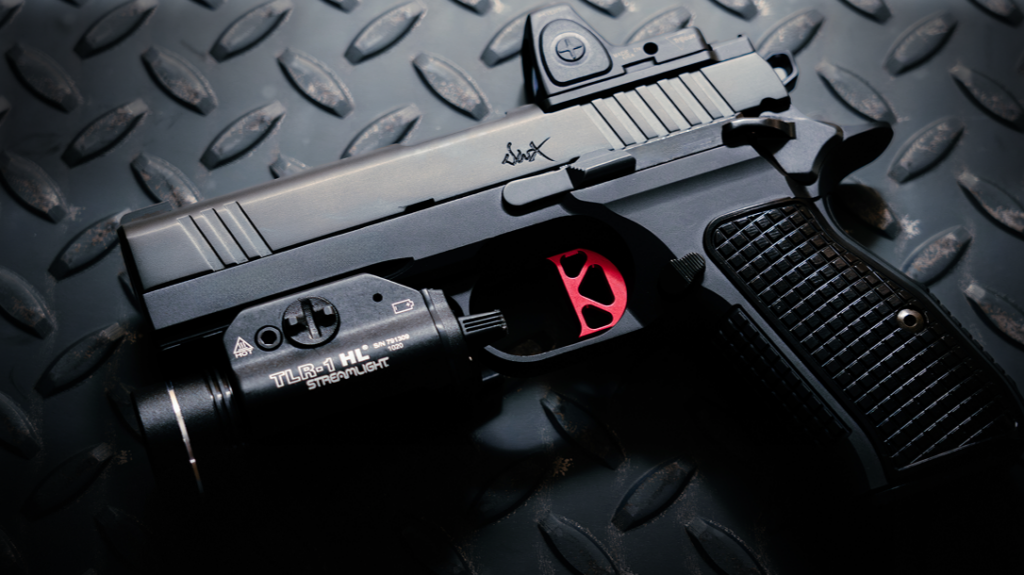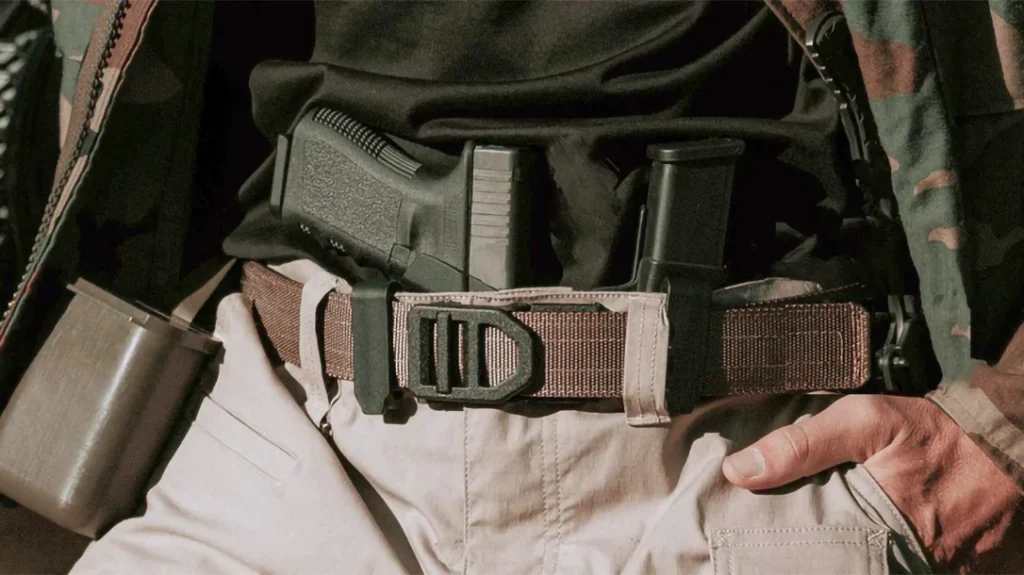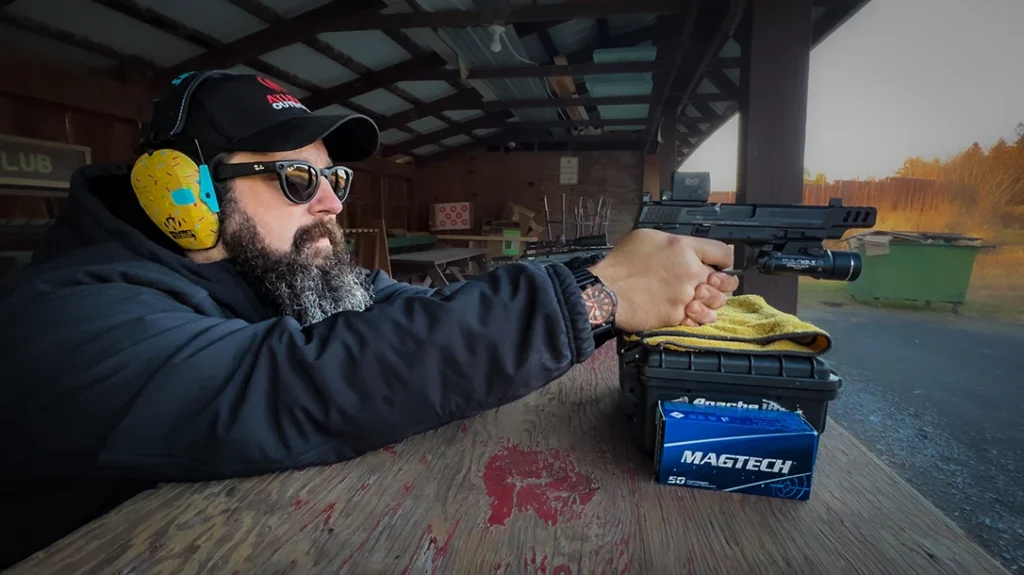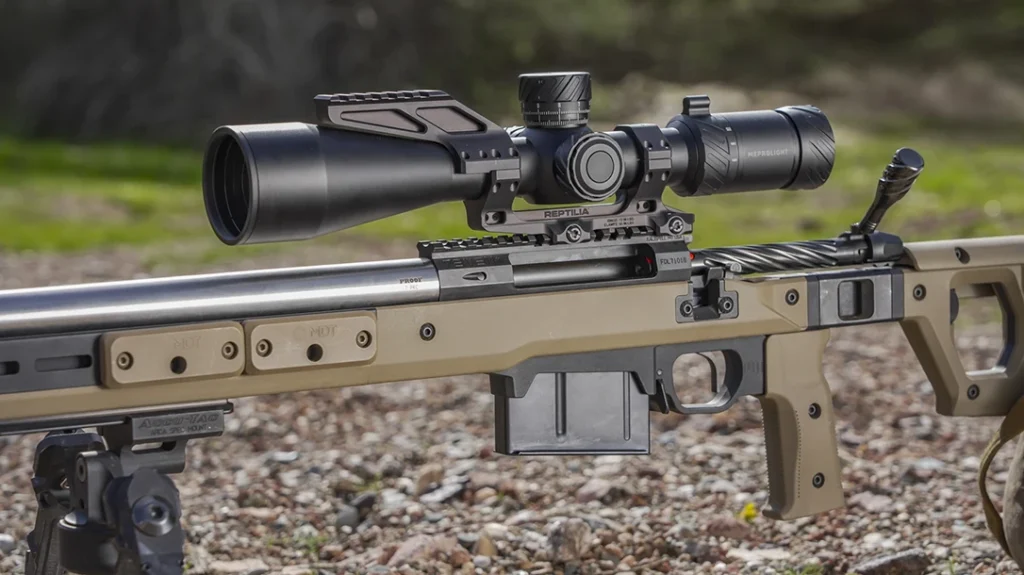After almost 30 years testing and evaluating handguns, it takes a lot to impress me because I have seen a lot of innovative ideas. It’s not that I am jaded, just that history tells us some designs are more enduring than others, and to make a meaningful change in the status quo takes something impressive. The Sig Sauer P320 is impressive.
While a modular pistol, revolver or semi-auto is not a new idea, nor is a removable fire control housing, Sig Sauer has come up with the easiest and most efficient design for changing grip sizes, frames, slide/barrel lengths and even calibers for any semi-auto in history.
Modular Nine
Advertisement — Continue Reading Below
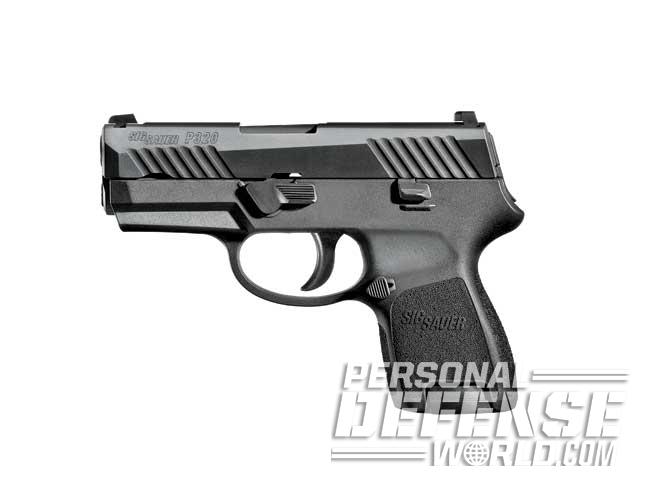
The legendary armsmaker (Sig was established 154 years ago in Switzerland) introduced most of this technology in 2008 with the Sig Sauer P250. The noteworthy difference with the P320 is that it’s the company’s first polymer-framed, striker-fired handgun, ever. Sig had a long time to work on this, developing not only a consummate striker-fired double-action-only (DAO) design that can be equipped with two different trigger systems (one with an integral trigger blade safety), but an improved action with a partially pre-tensioned striker and a short, crisp trigger pull with quick, pronounced reset. The clean exterior design has no external safety or decocking lever to catch or hang up on a draw from concealment, (however, if required, a thumb safety version is available for law enforcement needs, as is an optional magazine disconnect). In general, the P320 was engineered to eschew any external feature that can detract from the pistol’s fast handling. As a DAO design, it has second-strike capability, and with both front and rear serrations, the slide is very easy to manipulate with either hand as situations dictate. The slide release is ample in size and easy to operate; it is also ambidextrous and integral with the fire control housing. The triangular, serrated magazine release that’s built into the P320’s polymer frame is raised and well positioned to be easily operated by the strong-hand thumb. It is also reversible for left-handed operators.
RELATED STORY: Sig Sauer P290RS – A Lightweight, .380 ACP Pocket Protector
Advertisement — Continue Reading Below
While all of this stacks up in the plus column for ease of operation, the P320 has two more very indispensable features—well, actually about a dozen if you count all of the variations possible with the initial purchase of just one gun! The first is dealing with different hand sizes. Many companies offer interchangeable backstrap panels. Those work well. Sig Sauer went with interchangeable frames—available in small, medium and large sizes—which are sold individually. Being able to change frames also means being able to change frame size, so once you purchase a P320 Carry or a P320 Full Size model, it is possible to change frame sizes and make a Full Size into a Carry model, or vice versa, depending upon your initial purchase.
Kitting Up

The Carry Conversion Kit pictured is a composite of all available accessories and shows the three interchangeable frames, two short 15-round magazines (the standard capacity Full Size magazine holds 17 rounds of 9mm, and there are two of those as well), the Carry slide, standard Carry barrel, guide rod and recoil spring, and a threaded barrel for use with a suppressor. Individual grip modules sell for $46 a piece with the magazine release installed. Barrels are $199, ($235 for the threaded Carry model barrel). The P320 also allows changing calibers from 9mm to .40 S&W, .357 SIG and, new for 2015, .45 ACP. All changes can be done with the same frames. Caliber kits are $302 and include complete slide assembly, grip module (Carry or Full Size) and magazines. If that sounds impressive, you have not heard the best part. Making these changes takes less time than it takes to describe them. Each gun (Full Size or Carry) comes in a hard-molded case with two standard-capacity magazines and an injection-molded Sig Sauer paddle holster. This is the same holster as used with the P250.
Advertisement — Continue Reading Below
Striker-fired semi-autos have some very desirable features, simplicity being paramount among them, but Sig has taken that one step further by making the P320 foolproof to disassemble for cleaning or making any of the aforementioned alterations to the gun.
If you can change frames, change barrels and change calibers, then what exactly is “the gun” you might ask? It is an easily (and the operative word here is “easily”) removed fire control housing that contains the frame rails, trigger and striker mechanisms, internal safeties and the ambidextrous slide releases. It measures a mere 4.25 inches in length, 0.975 inches in width (plus the slide-release levers) and 1.75 inches in height, including the trigger, and the housing is serial numbered. This is “the gun,” everything else surrounding it is interchangeable.

In terms of safety, the takedown procedure is the easiest of any semi-auto on the market. And Sig is absolute in ensuring the gun is in a safe condition when being disassembled. In addition, unlike most striker-fired designs, there is no need to pull the trigger before removing the slide. You simply lock the slide back, thereby ejecting any chambered round, remove the magazine, eliminating the possibility of chambering a round, rotate the takedown lever, release the slide from its locked position and pull it forward off the frame. No tools, no parts to remove, and it can be accomplished in a matter of seconds. Reassembly is just as quick, unless, of course, you decide to make it into an entirely different gun! That will take about a minute longer.
Advertisement — Continue Reading Below
RELATED STORY: 4 Pocket-Friendly Sig Sauer Pistols
To change frames, simply continue and rotate the take-down lever to the correct position and pull it through the frame and fire control housing opening on the right side, then pull it through the left side of the fire control housing and frame. This is the only part that has to be removed, and there are no tools required. At this point, lift up on the front of the fire control housing, press the trigger back slightly to clear the opening in the frame and remove the entire housing.
Reassembly is in reverse order, making certain to seat the back of the fire control housing into the frame retention slot and to push the trigger back slightly to fit into the frame opening, then reinsert the take-down lever and you are done. From this point, depending upon which frame you are using, Full Size or Carry, add the appropriate slide and barrel configuration, lock it back with the slide stop, rotate the take-down lever to the locked position and you have a new gun. The same process would be used to change calibers by replacing the barrel and slide as required, and all of the magazines are interchangeable with the frames. Every frame has a standard dustcover rail; 2.75 inches in length for Full Size frames and 1.875 inches on the Carry. With one gun, you can have every gun.
Advertisement — Continue Reading Below
Range Workout
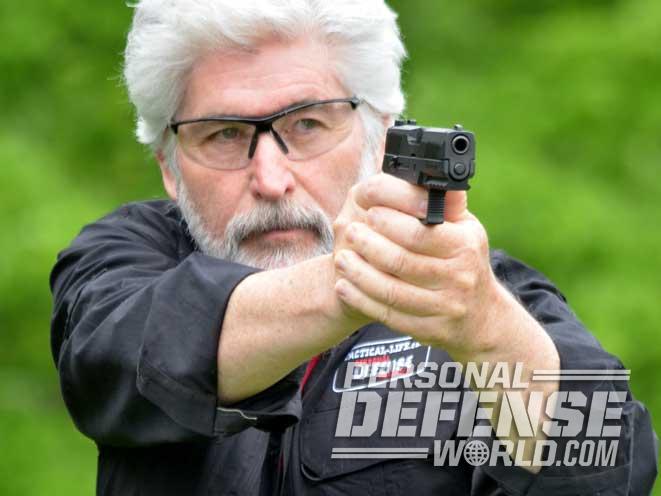
Testing was done from a combat distance of 15 yards (45 feet) using three defensive loads. The P320 Carry has an overall length of 7.2 inches with a 3.9-inch barrel, a height of 5.3 inches and a width of 1.3 inches. Carry weight with the 15-round magazine is 26 ounces. The slides come with SIGLITE night sights, which provide a very clean sight picture under all lighting conditions. With the Carry slide, the sight radius measures approximately 5.8 inches.
Advertisement — Continue Reading Below
Of the three frame sizes offered for the Carry conversion, I went with the medium for the best grip comfort. Each step up increases the size of the palm swell and distance to the trigger by approximately .0625 inches (roughly 1/16th of an inch). My comfort gauge is a grip size that positions my strong-hand thumb just over the fingernail on the second finger as I grip the gun. Any shorter and the thumb can make contact with the tip of the trigger finger (not good), and any longer can weaken your grip. I actually could have gone with either medium or large but found the best balance with the medium frame. This is the beauty of the Sig Sauer design because one can really fine-tune this combination. Secondly, if cold weather demands gloves or tactical gloves are mandatory, adjusting frame sizes only takes a few minutes with the Sig Sauer P320 frames, barrel and slide kit. The same applies for switching from the standard barrel to the threaded barrel for use with a suppressor.
Sig Sauer offers only only one trigger pull weight commercially that ranges from 5.5 to 6.5 pounds. Pull on the test gun, as averaged on a Lyman trigger pull gauge, was 6.4 pounds, which, with the gun’s short trigger pull (0.625 inches), zero overtravel and quick reset, was a nominal deviation. This is a very easy gun to handle and shoot with consistency.

Test ammunition was a variety of grain weights: 115-grain Speer Personal Protection Gold Dot hollow points (HPs), 124-grain Federal Premium Personal Defense Hydra-Shok jacketed hollow points (JHPs) and heavyweight 135-grain Hornady Critical Duty FlexLock. Speer cleared my ProChrono chronograph’s traps at 1,175 feet per second (fps), while the Federal and Hornady loads hit 1,090 and 1,085 fps, respectively.
Advertisement — Continue Reading Below
RELATED STORY: Gun Review – Sig Sauer P226 X-Five Short
All tests were conducted from a distance of 15 yards (45 feet) using a two-handed hold and Weaver stance. There was no appreciable difference in felt recoil between the three brands of defensive ammunition. Trigger pull was quick, as expected, and reset was instantaneous. The sights are easy to acquire and the gun’s operation was flawless with no failures to perform. The design also facilitated quick reloading. The Sig P320 Carry is a very intuitive firearm to handle for anyone who has even modest experience with semi-autos.
As a base line for the P320 Carry’s accuracy, the results were more than satisfactory for firing off-hand, with all rounds striking the 9, 10 and X rings of a Law Enforcement Targets cardboard B-27 silhouette. The best five-shot group measured 1.7 inches, center to center, with Federal, all inside the X (with two cutting the line on the 10). Hornady slammed five rounds in the 9 and 10 between 12 and 2 o’clock, measuring 2 inches. Speer, the lightest grain-weight round fired, had the widest spread, with all five rounds inside the 9 and 10 rings, measuring 3.7 inches from the top of the 10 to the bottom. From a self-defense position, all hits were in the center body mass, with the majority of 15 rounds fired at this target inside of 2.75 inches.
Advertisement — Continue Reading Below
For more information visit http://www.sigsauer.com or call 866-345-6744.
